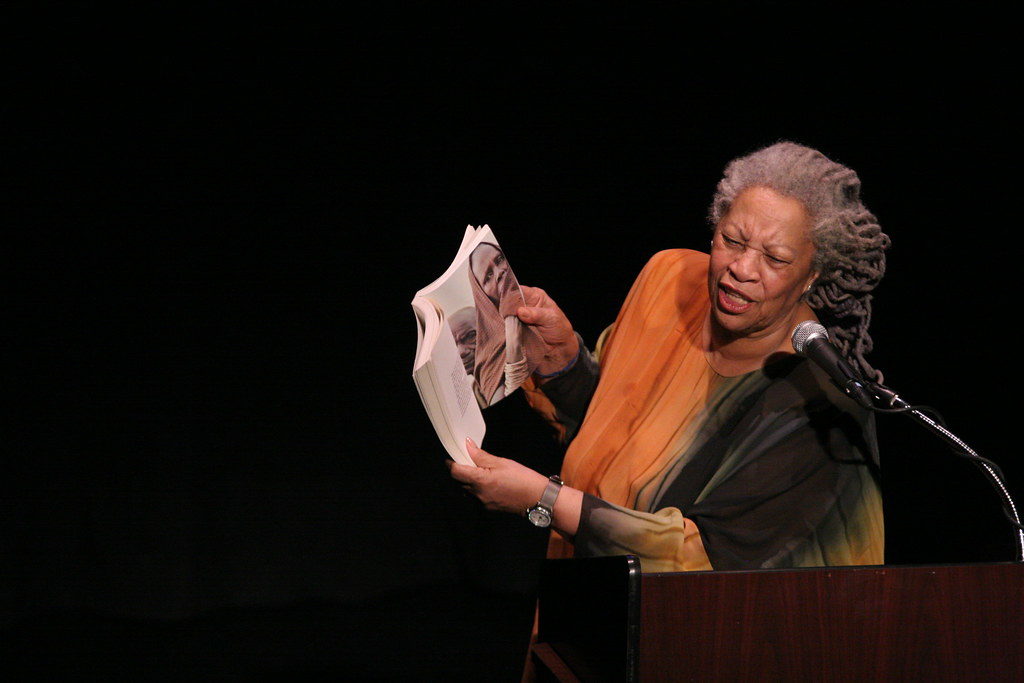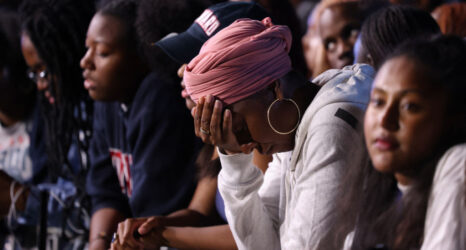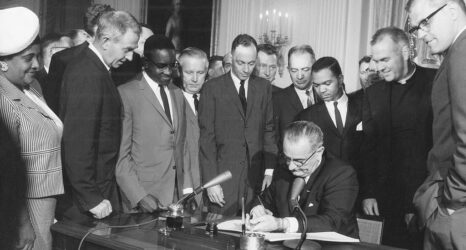I write this Tribute to one of America’s greatest writers, Toni Morrison—novelist, editor, educator, mentor, mother, Black feminist, legacy builder. I write between the seasons, or rather, just before “summer [is] hooted offstage, and autumn with its bottles of blood and gold [gets] everybody’s attention.”
This perceptively colorful line from her most celebrated novel on slavery, Beloved, is a reminder of Morrison’s poignant gift for language. In her novels, even the landscapes come alive, engaging in as much action as her complicated human characters. How sadly fitting that she left us in the summer of 2019, when the planet rages against climate change and after a weekend in which multiple mass shooters had proven her point about the dangers of “othering others,” as she explored in one of her many meaningful collections of essays on race, The Origin of Others.

Born Chloe Anthony Wofford on Feb. 18, 1931, Morrison was blessed with 88 years of life, and her contributions were remarkable. During her lifetime, she completed 11 novels and was working on a 12th when she died. Beyond novels, she gave us a short-story roman à clef on race, Recitatif, and two plays: Dreaming Emmett and Desdemona. Both plays centered on ghosts, not unlike the spectral eponymous character of Beloved or the historical figure who haunts the libretto she wrote for Margaret Garner, an opera based on the slave mother who not only inspired the character Sethe from Beloved but infamously fueled abolition debates in 1856 when she killed her baby daughter to prevent her return to slavery. Morrison also ventured into poetry, including Five Poems, and a song cycle, Honey and Rue, set to music by André Previn and premiered by opera singer Kathleen Battle. She even wrote children’s books with one of her sons, Slade Morrison. From novels to poetry to drama and song, Morrison’s writing encompasses every performative form of storytelling. Even more important is her potent imagination.
It is astounding that—given her tremendous gifts—many of her interviews during the prime of her career in the late 20th century were conducted by white journalists and critics, whose usual line of inquiry questioned why her writings explored only the African American experience, implying that her subject matter should somehow be broader and “more universal.” Imagine delving through the richness of Morrison’s stories—in which characters like the titular Sula announce their return to a village via a “plague of robins”; or a travel-weary Pilate (Song of Solomon) navigates her life without a navel; in which a formerly enslaved Baby Suggs (Beloved) emerges as a messianic leader for her community and preaches a profound sermon on freedom for the ages; or in which a group of women mysteriously disappear after an assassination attempt on their lives in Paradise—and the only detail on which to comment is their Blackness and their womanhood. Before there was Twitter and the useful hashtag #BlackGirlMagic, Morrison illuminated the magical means of Black women’s survival and thriving in ways that complicate representations of race and gender.
Yet despite her obvious brilliance and intellectual acumen, her very Blackness and womanhood was enough for some to question her assured place in the canons of both American and world literature. There was the controver sial moment when—to the shock of various scholars, writers and artists—Beloved did not win the coveted National Book Award in 1987, although it did win the Pulitzer Prize the following year. Even when she won the Nobel Prize in Literature in 1993, some critics opined on whether her selection was a political choice. This was just one demonstration of what Morrison called the severe “distraction” of racism that keeps Black artists and intellectuals from doing their important work. Her illustrious and productive career is a model for how to transcend the low expectations of bigotry.
Watching Timothy Greenfield-Sanders’ documentary about her life, The Pieces I Am—which played in theaters earlier this summer—we get only brief glimpses of the writer, literal “pieces” of her life. Morrison, larger than life yet personable in the film, is oftentimes cagey about her own experiences, in comparison to other self-revelatory Black women writers like Audre Lorde, Alice Walker and bell hooks.
We know something of her childhood upbringing in a working-poor, mixed-race neighborhood of Lorain, Ohio, during the Great Depression, and she mischievously described herself as “loose” when she found freedom as a college student at Howard University. A single mother of two sons, she stole quiet moments in the predawn hours to write before going to work—the first of her novels, The Bluest Eye, published in 1970 when she was already nearing 40—and she capitalized on her position as a Random House editor to not only publish her own work but also to edit and promote the work of other African American writers, from Angela Davis to Gayl Jones to Toni Cade Bambara.
Quiet as it’s kept, Morrison’s many hats enabled the beautiful flowering of African American and women’s writings, which built the foundations on which women’s and gender studies, ethnic studies and diverse contemporary literature have flourished.
Morrison changed the course of how, who and what we read. If we cannot imagine a “universal” world without the presence of women, people of color, living environments and various marginalized “others,” that is the work of Morrison and others of her generation who dared to imagine differently. This is a lesson she imparted to her many students at Princeton University and other institutions where she taught, including the University at Albany, where the office she once used is now my own. In The Pieces I Am, she reveals that she told her writing students not to write about what they know, but instead to write what they don’t know.
What an extraordinary lesson for all of us: to step out of our comfort zones and consider the lives of others. This would take not just skillful imagination but loads of compassion and humility. Morrison has taught us well in this regard.





